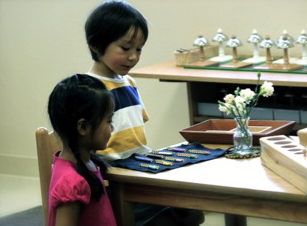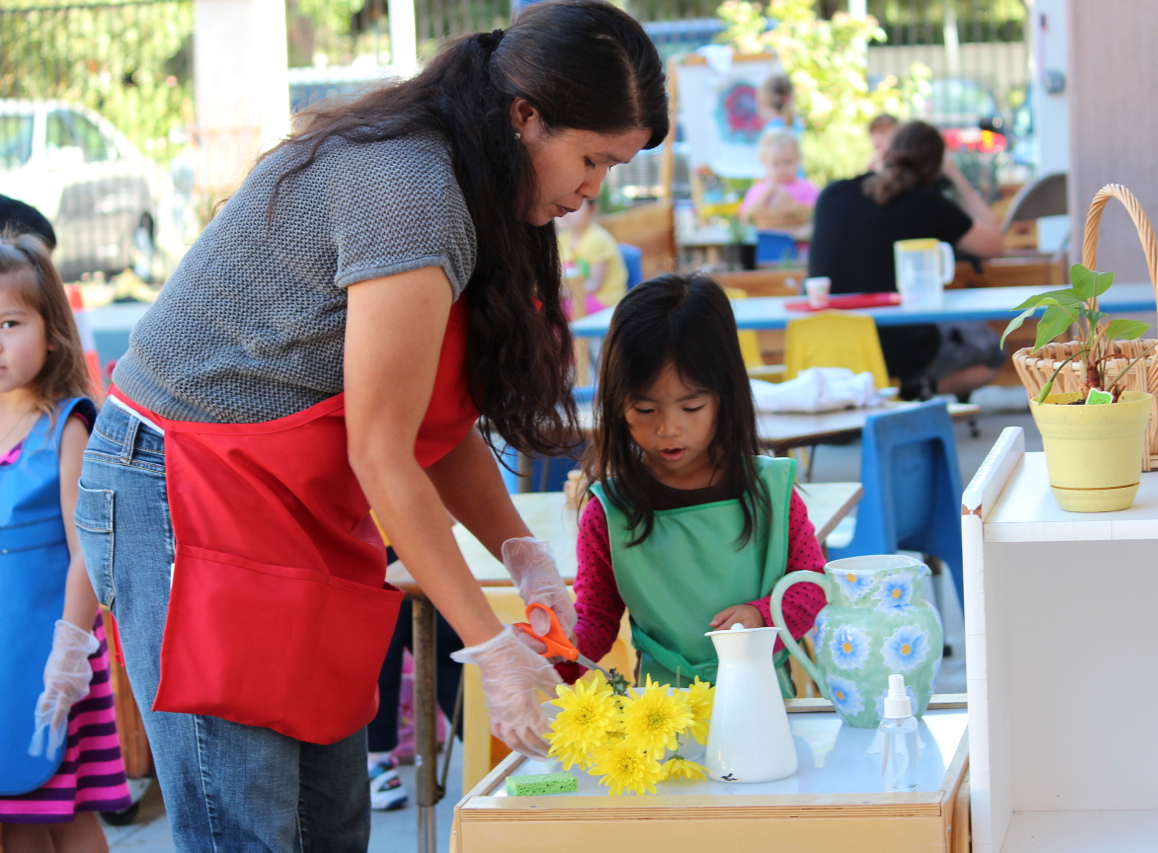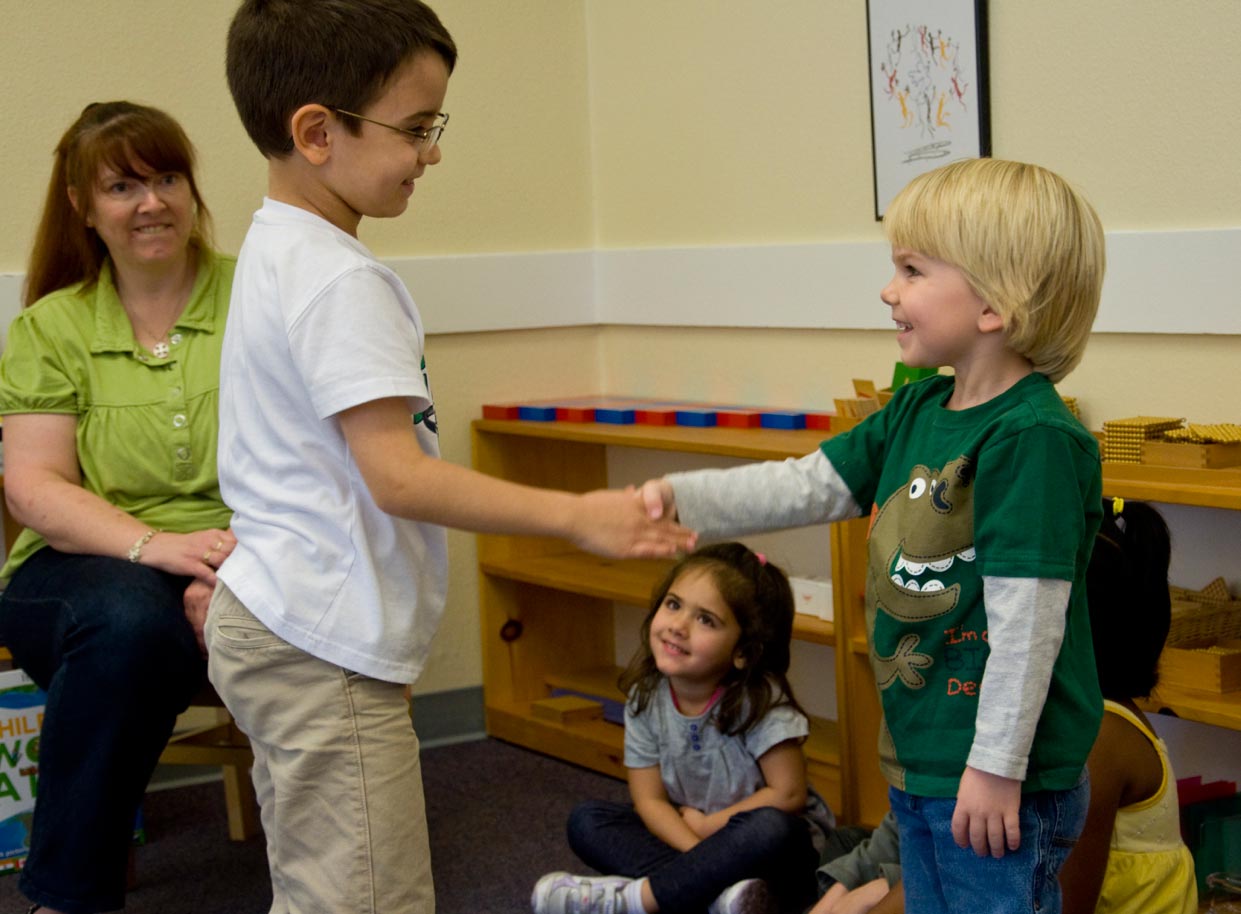A True Learning Community: the Mixed-Age Montessori Preschool Classroom
In addition to the unique Montessori materials, one of the first things you notice when you observe a Montessori preschool classroom is the wide range of ages in the class: 3-year-olds work alongside and sometimes with 5- and 6-year olds. Children stay in the same classroom community for a full three years: the traditional kindergarten year is integrated into the 3-year Montessori Primary program.
Often, parents new to Montessori preschool wonder: how will this 3-year-cycle work out for my child? Will my 3-year-old be intimidated by the much larger 6-year-olds? Will my kindergarten-aged child revert back to babyish behavior because she is around younger preschool children? And, maybe most importantly, how can one trained Montessori teacher possibly ensure that 20 or 30 students in her classroom are challenged and engaged, when she has such a wide range of abilities to accommodate?
The Montessori materials are one key factor that enables the 3-year cycle to work. But, in amazing ways, it is the 3-year, mixed-age environment itself that provides an optimal learning environment for all students!
In contrast to most other preschool or school settings, in Montessori preschool, your child will typically stay with the same teacher for three years. This has many benefits:
- No annual “getting to know you period.” In most other preschools and elementary schools, a teacher has to get to know a whole new group of 20+ children, each September. She has to assess their academic, motor and social skills. She has to get to know their strengths and weaknesses, discover their temperaments, learn about their home environments, and build relationships, with 20+ children. In contrast, in a Montessori preschool class, only about 1/3 of students are new each September!
- The teacher can really get to know each child. Because Montessori teachers have each preschooler for about three years, they can get to know this child well: Is she shy and needs time to warm up? Is he a strong-willed little person who needs very firm limits and immediate consequences? Does she love flowers—or machines? Does he love to tell and write stories, or would he rather work quietly with puzzles? Every detail that a Montessori teacher knows about a child is an insight that helps her to tailor the curriculum to that child.
- Teachers as partners to parents. Over a three-year period, you can build a relationship with your child’s teacher. This means you have a knowledgeable adult at your service who knows your child really well. She is also a professional who spends significant amounts of time with many children of your child’s age, and can be a valuable resource if concerns arise regarding learning or behavior.
And while parents may initially be skeptical of the mixed-age preschool classroom, there are benefits that are not immediately evident:
- Older children—and their advanced work—inspire the younger ones. Children who are new to a Montessori preschool class often learn much from the older students. A 3-year-old may observe carefully as a 4-year-old works with the Sandpaper Letters, for example—and he will learn a lot in the process. One of our teachers reports being stunned when a little friend of 3½ years knew all the letters on the initial presentation: she had observed her older friend’s lessons and work, and absorbed all that knowledge! Just as importantly, the younger students desperately want to be as capable as the older students they adore. This is a great motivation for them to master the early materials: they know that there is a progression of lessons, and that in order to do the exciting Golden Bead work, for example, they have to first master their numbers to 10!
- An ability to be the youngest and the oldest child, in turn. Most children have a fixed role in life: the big sister, the little brother, etc. In a Montessori environment, each gets a chance to have all roles: big sisters suddenly are the youngest when they arrive, and are able to find older friends as role models and mentors. Little brothers who complete the three-year-cycle finally get to be the leaders, to be admired by and to mentor their younger peers. This exposure to different roles fosters the astounding kindness and nurturing nature about which parents and others so frequently remark when they observe our classrooms or encounter Montessori children in the world!
- A benevolent, non-competitive, growth-focused community. In a typical single-age setting, where all children do the same thing at the same time, it’s easy for children to start comparing themselves to others, rather than to focus on getting better themselves. They think, “I can read more than Susi,” instead of “now I can read books with phonograms: I’ve learned a lot since the summer.” In the Montessori preschool class, in contrast, each child works independently, at his level. The result? A benevolent community of young learners, each focused on growing, and none jealous of the others’ achievements nor frustrated by an inability to keep up with more advanced peers.
A tremendous opportunity to develop real confidence and leadership for those children who stay for the entire 3-year-cycle. Click here to read more about the significant non-cognitive benefits earned by those children who stay for the critical 3rd year of the 3-year-cycle.
















